Identify tree species by their unique seed pods with this detailed guide. Explore samaras, legumes, and cones, featuring stunning images, descriptions, and expert tips for accurate identification.
- Discover the diversity of seed pods, from winged samaras to multi-seeded legumes.
- Learn how shape, size, color, and texture reveal a tree’s identity.
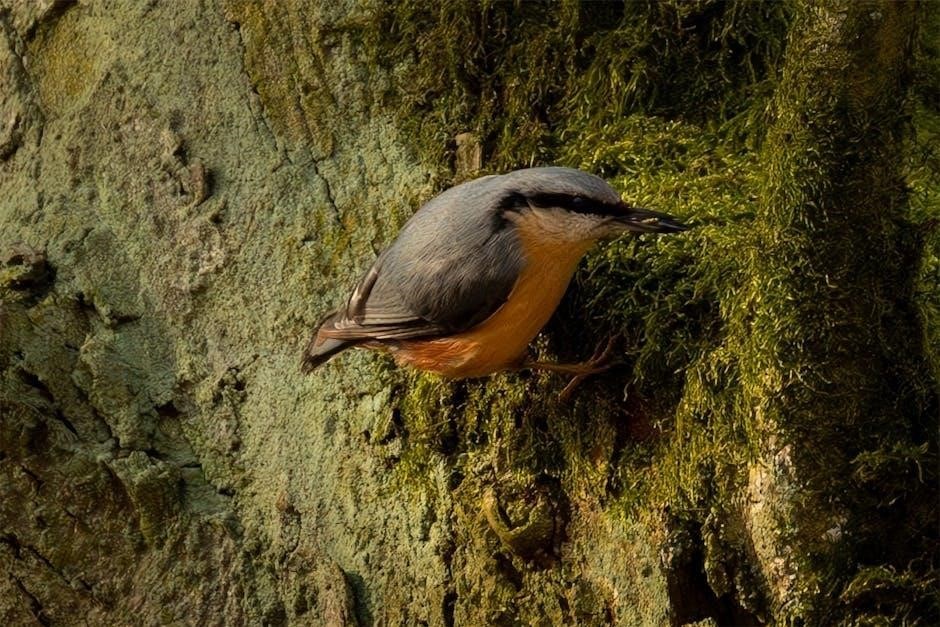
Seed pods are natural structures produced by trees to protect and disperse seeds, varying greatly in shape, size, and texture. They play a crucial role in tree reproduction and species identification.
The Importance of Seed Pods in Tree Identification
Seed pods are vital for identifying tree species, as their unique shapes, sizes, colors, and textures provide distinct clues. Unlike leaves, which may not always be present, seed pods often remain on trees year-round, offering consistent identification features. Each tree species produces pods with specific characteristics, such as samaras (winged pods) or legumes (multi-seeded pods). By examining these traits, enthusiasts can accurately determine a tree’s identity. Additionally, seed pods reflect evolutionary adaptations, showcasing nature’s diversity. Understanding seed pods enhances botanical knowledge and fosters a deeper appreciation for tree biology and ecology. Practical observation of seed pods can empower anyone to identify tree species confidently in various environments.
How to Begin Identifying Seed Pods
Start by carefully observing the seed pod’s shape, size, and color. Note its texture and whether it is woody, leathery, or fragile. Document these features using photos or sketches. Pay attention to the number of seeds inside and their arrangement. Seasonal timing is crucial, as most seed pods mature in autumn or early spring. Use field guides or online resources to compare your findings with detailed descriptions and images. For accuracy, examine multiple pods from the same tree to account for variations. Practice regularly to build familiarity with different species and their unique pod characteristics. This systematic approach will enhance your skills in identifying tree seed pods effectively.
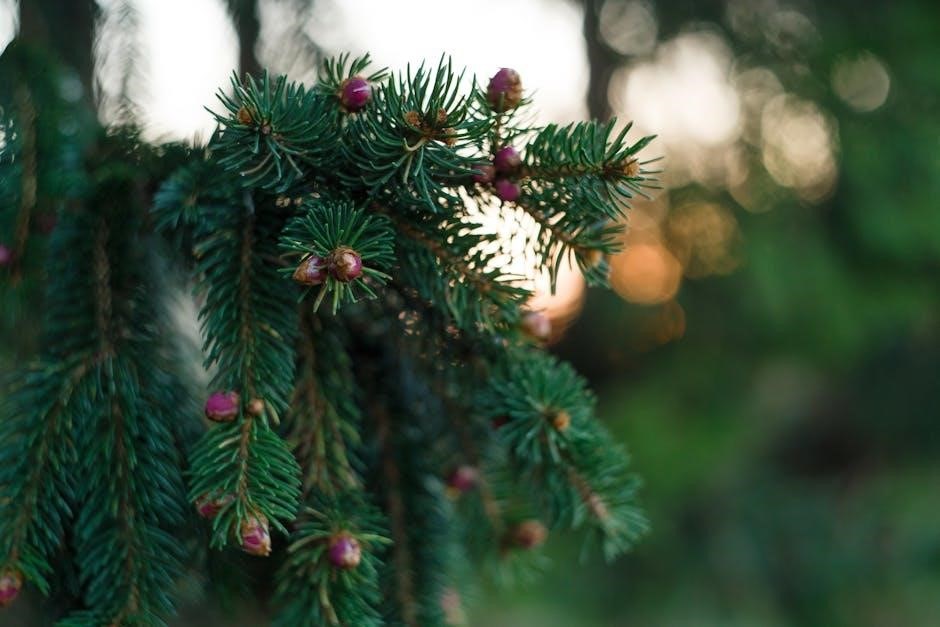
Common Types of Seed Pods
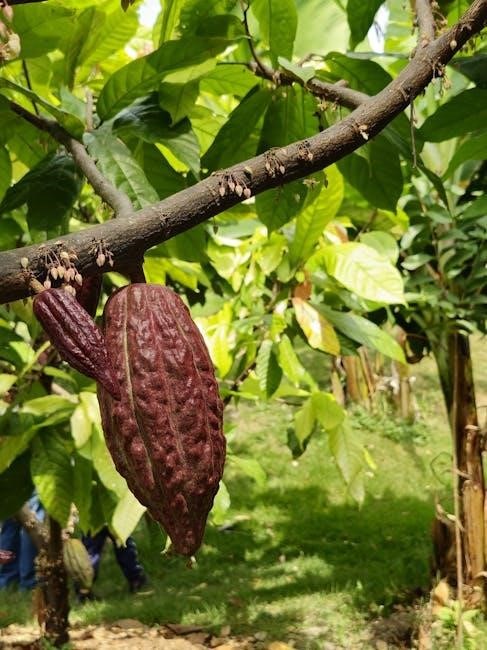
Explore the diverse world of seed pods, including samaras, legumes, cones, and more, each with unique shapes and features that aid in tree identification.
Samaras: Winged Seed Pods
Samaras are winged seed pods, most notably seen in maple trees. These distinctive pods have a single seed attached to a flat, papery wing, aiding in wind dispersal. The size and shape of samaras vary among species, with some featuring a single wing and others having double wings. For instance, the Norway maple produces large, broad samaras, while the sugar maple has smaller, more delicate ones. The wings are often angled, allowing the seed to spin as it falls, enhancing its spread. This unique adaptation ensures the seeds travel farther from the parent tree, increasing the chances of successful germination. Samaroid structures are also found in ash and elm trees, making them a key feature for identification.
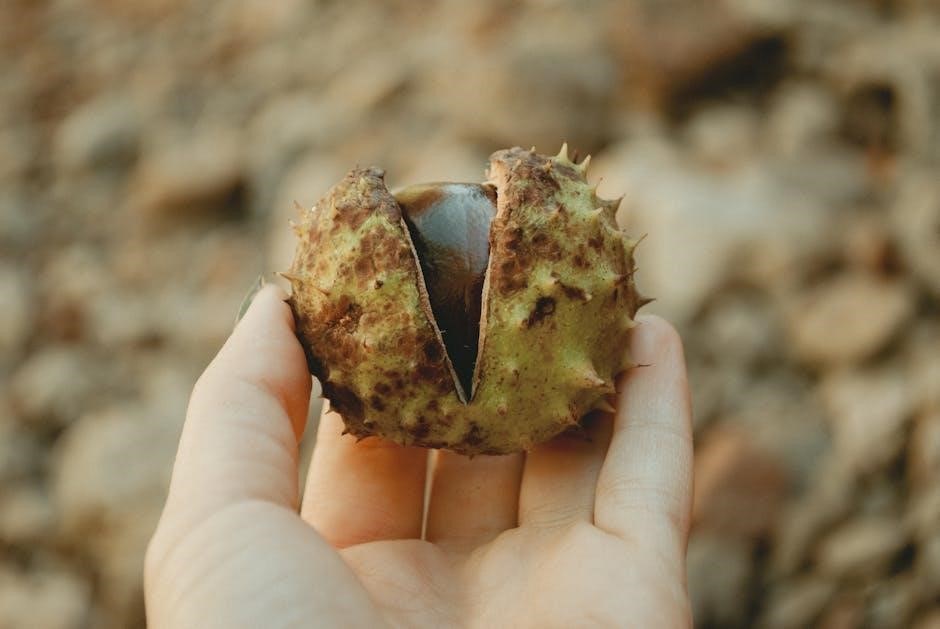
Legumes: Pods with Multiple Seeds
Legumes are seed pods that contain multiple seeds, commonly found in trees like mimosa, redbud, and honey locust. These pods are typically long, flat, and cylindrical, with a leathery or woody texture. They often split open to release their seeds, which are arranged in a single row. For example, the mimosa tree produces pods up to 8 inches long, while the American redbud has smaller, pea-like pods. Some legumes, like those of the honey locust, are twisted or spiraled, adding to their unique appearance. The size, color, and arrangement of seeds within the pod are key features for identifying specific tree species. Legumes are a vital clue in distinguishing trees, especially during autumn when pods are most visible.
Cones: Seed Pods of Coniferous Trees
Cones are the seed pods of coniferous trees, such as pines, spruces, and firs. They are woody, protective structures that house seeds, playing a crucial role in forest ecosystems. Pine cones are large and woody, with scales that open to release seeds, while spruce cones are smaller and more delicate. Fir cones are upright and disintegrate at maturity, scattering seeds. The size, shape, and texture of cones vary significantly between species, aiding in identification. For example, pine cones are often resinous, while cedar cones are small and barrel-shaped. The arrangement of seeds within the cone scales also differs, with some species producing winged seeds for wind dispersal. Cones are a key feature for distinguishing coniferous trees, especially during seed dispersal seasons.
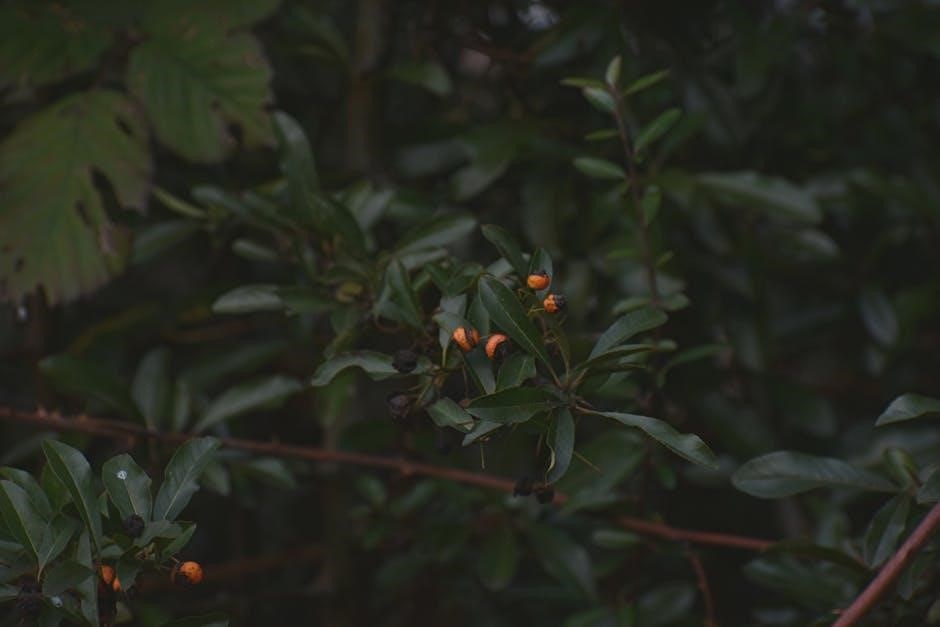
Key Characteristics for Identification
Examine size, shape, color, and texture to identify seed pods. Note the number of seeds and their arrangement within the pod for accurate species determination.
- Size and shape are critical distinguishing features.
- Color and texture vary significantly between species.
- Seed count and arrangement within the pod are key identifiers.
Size and Shape of Seed Pods
The size and shape of seed pods are crucial for accurate tree identification. Seed pods vary significantly, from the flat, elongated pods of the redbud tree to the twisted, spiral-shaped pods of the mimosa. Some pods, like those of the maple tree, are winged (samaras), while others, such as pine cones, are woody and conical. The length of seed pods can range from just a few centimeters, as seen in the small pods of the silver birch, to several inches, as in the case of the chestnut tree. Observing these physical characteristics helps narrow down the species. For instance, the flat, pea-like pods of the elm tree are distinct from the cylindrical pods of the ash tree. Measuring and comparing these features is essential for precise identification.
- Measure length and width for accurate classification.
- Note unusual shapes, like twists or wings.
- Compare with reference images or guides.
Color and Texture of Seed Pods
Seed pods exhibit a wide range of colors and textures, providing vital clues for identification. Many pods are brown or tan, such as those of the silver birch, which have a papery texture. Others, like the mimosa tree, feature reddish-brown pods with a leathery surface. Some pods, such as those of the horse chestnut, are initially green but turn brown as they mature. Texture varies from smooth and glossy, as seen in beech pods, to fuzzy or hairy, like the seed pods of the cottonwood tree. These visual cues, combined with size and shape, help distinguish between species. Observing these details can significantly aid in accurately identifying tree species.
- Look for color changes during maturation.
- Examine surface textures like smooth, fuzzy, or leathery.
Number of Seeds and Their Arrangement
The number of seeds within a pod and their arrangement are critical identifiers. For instance, maple trees produce samaras, each containing a single seed, while legume pods, like those of the mimosa tree, hold multiple seeds. Conifers often have cones filled with numerous seeds, arranged in a spiral pattern. Some pods, such as walnut, encase a single large seed, while others, like the horse chestnut, contain several seeds embedded in a fleshy interior. The arrangement can also vary; seeds may be loosely packed, tightly clustered, or even spirally twisted, as seen in some legume pods. Observing these traits helps narrow down species identification, as each tree’s seed pod structure is unique.
- Count the seeds within the pod for species clues.
- Note the arrangement, such as spiral or linear patterns.
Mastery of seed pod identification deepens your appreciation of nature and enhances tree recognition skills. By observing shape, size, color, and seed arrangement, you unlock species secrets effectively.
Practical Tips for Seed Pod Identification
Identifying seed pods requires careful observation of their physical characteristics. Start by noting the size and shape, as these can vary significantly between species. For example, maple trees produce winged seeds called samaras, while legumes, like those from pea or bean plants, have pods that split open to reveal multiple seeds. Consider the color and texture as well—some pods are smooth and shiny, others rough or hairy. The number of seeds and their arrangement within the pod can also provide clues. Additionally, think about the time of year and the tree’s habitat, as these factors can influence the presence and appearance of seed pods. Consulting field guides or online databases with images and descriptions can aid in accurate identification. By combining these observations with knowledge of the tree’s other features, such as its leaves and growth habits, you can effectively identify seed pods and the trees they belong to. Remember to be cautious of lookalikes and take notes or photographs for comparison. With practice, you’ll become proficient in recognizing different seed pods, enhancing your understanding of the natural world.

Final Thoughts on Seed Pod Identification
Mastering seed pod identification is a rewarding skill that deepens your connection with nature. By observing size, shape, color, and texture, you can confidently recognize tree species. Remember to consult field guides or online databases for accurate comparisons. Practice patience, as some pods may resemble others, and note seasonal variations. Enhance your knowledge by exploring images and descriptions of seed pods from various regions. With time and practice, identifying seed pods will become second nature, enriching your walks in forests, parks, or even your backyard. Embrace this journey of discovery and enjoy the fascinating world of trees and their seed pods!